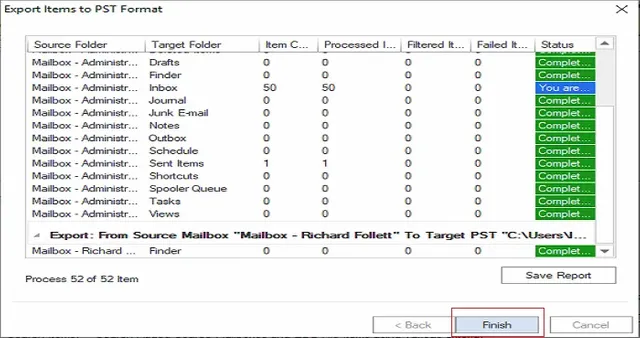An exchange database is essentially the complete form of an EDB file, and it is a storage file on the Exchange Server. However, the Exchange database, like other file formats, is susceptible to corruption, which occurs in a variety of ways. The nightmare is that there is no trustworthy option for Exchange Database Recovery, and I mean that literally.
Fortunately, there are a few automatic programs available on the internet to Recovering an Exchange Database. As a data migration engineer, I've tested various Exchange Recovery programs. Unfortunately, many of them are fraudulent or simply collapse in complex settings.
I've been using a product called GainTools Exchange Recovery Manager for a few years now and have never had a problem with it.
Reliable & Time-tested Tool for Recovering an Exchange Database.
I tried this tool for the first time in two years and found it far more convenient than my prior one. In addition, the software includes numerous complex capabilities that I have not seen in other applications I have tested.
The primary reason I chose this application is its interoperability with all Exchange versions and Windows operating systems. I was skeptical at first, but GainTools offers a free version to alleviate this concern. From a consumer standpoint, the evaluation version is the finest way to feel confident about any product.
The following are Some of the features of this tool that can help make the procedure easier:
- This software allows you to effectively add numerous Exchange databases and recover them in a single procedure, with no file size restrictions.
- It shows a preview of newly inserted Exchange Database entries, including all associated meta properties.
- After recovering the Exchange Database, you can move it to Live Exchange and Office 365 mailboxes, public folders, and archive mailboxes.
- The software includes an incremental export option that is rarely found in other tools. This option allows users to restart the paused procedure while preventing duplication.
Along with these features, the software includes several additional useful functions. The free version can be installed and used to test its features. Allow me to describe the Exchange Recovery process so you can use the free version.
Steps to Recovering an Exchange Database with GainTools Tool
I've converted the recovered EDB file to Outlook PST format, which you can use as needed.
- Install and run the application on your PC.
- Then, on the ribbon bar, click Add source and pick EDB file from the left pane.
- Next, browse/search the Exchange database for recovery, then click the next button.
- Now, select Outlook PST/Live Exchange/Office 365 from the ribbon bar. (In my case, I chose Outlook PST.)
- In the next wizard, check or un-check sub folders to export and browse the location to save the resulting PST file. The same wizard can also be used to set a password.
- Additionally, the filter wizard appears. Choose the filter option based on what you want. Clicking the Advanced option button also gives you access to email translation, folder mapping, and thread count options.
- Finally, the software will start exporting the restored Exchange database to Outlook PST format. The software also displays a live log record of the process, allowing you to confirm its accuracy.

Final Words
Recovering an Exchange Database is not everyone's cup of tea, but GainTools Download Exchange Recovery Tool makes it simple even for non-technical users. As previously said, you can use the free version to examine the product before purchasing. Finally, it is entirely up to you which option you choose.